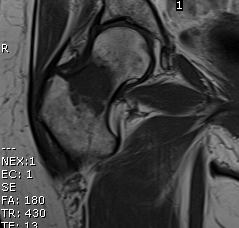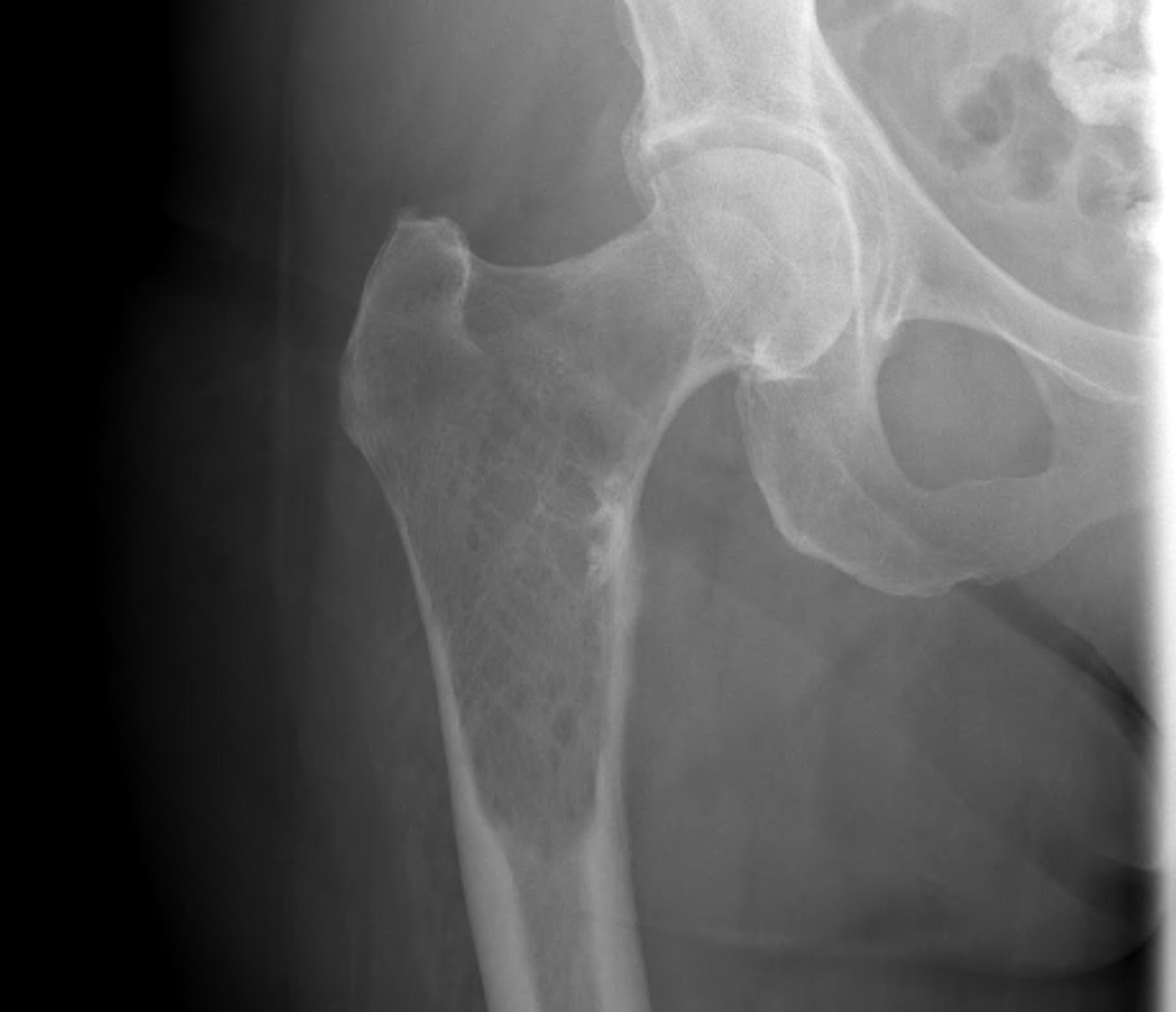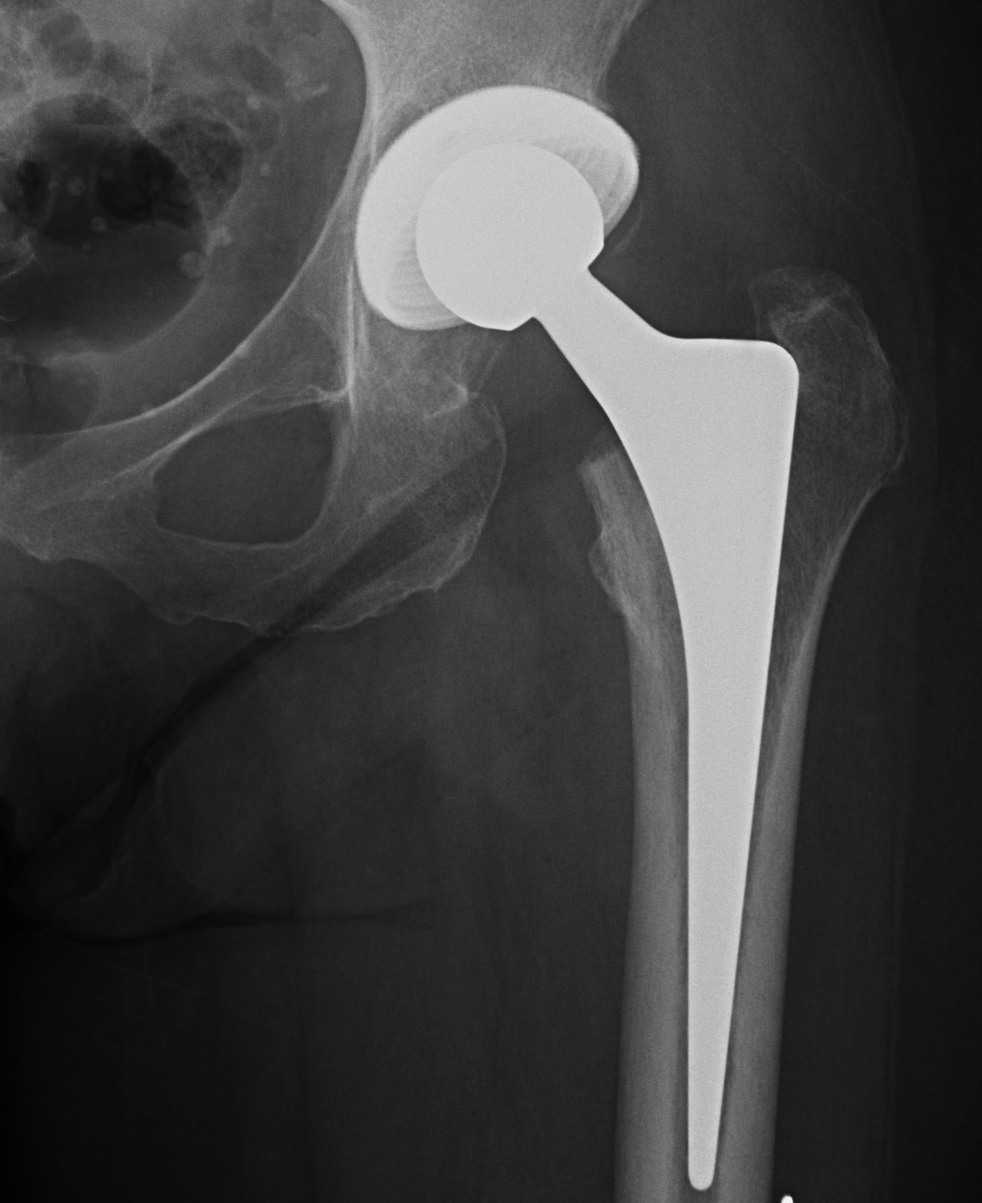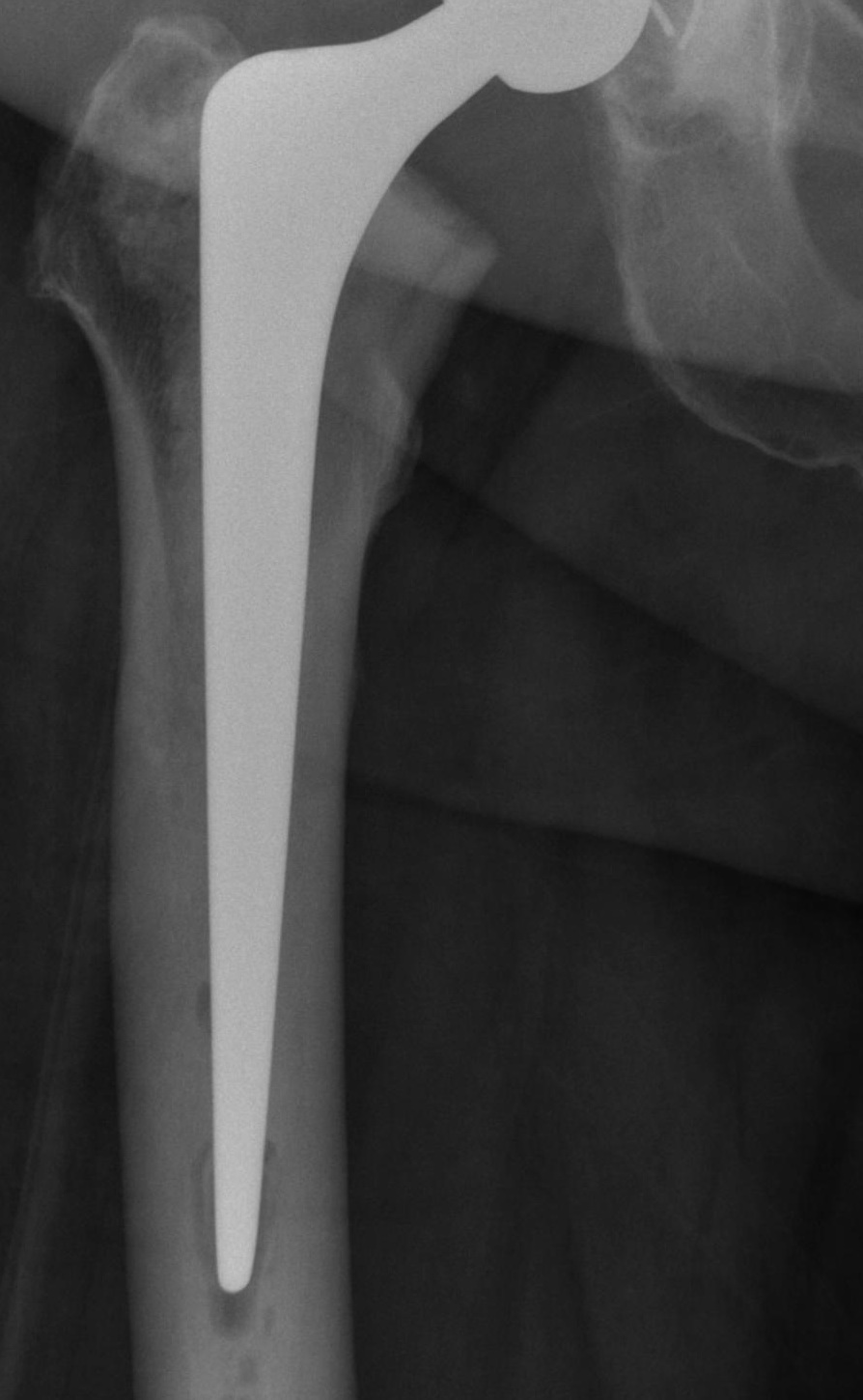Distal Femur Fractures
AO Classification
Types
1. Supracondylar
2. Unicondylar
3. Intracondylar
Xrays
Supracondylar / Extra-condylar
Types
1. Supracondylar
2. Unicondylar
3. Intracondylar
Supracondylar / Extra-condylar
Femur
Multiplanar deformity
- worsend by previous surgery
- may require osteotomy
Acetabulum
Dysplasia often present
- not as severe as in DDH
LLD
Can be significant
Abductors
Have been short for long time
- difficult to restore length

Usually young patients
- 15 - 40
15% compound
High velocity injury
- MBA
- MVA
- pedestrian v car
- fall from height
EMST principles
- need for transfusion not uncommon


Fractures
Principle
- do very poorly with fixation
- hemiarthroplasty or THR
- stem should be 2.5 cortical diameters beyond any area of weakness
- THR if acetabulum involved
Theory
- want to traverse one muscle / one compartment
- keep away from NV bundle
- as a rule perform open biopsy through compartment the tumour is in
- this is the compartment that will require surgical removal in wide excision
- direct approach without going through muscle if possible i.e. tibia, distal ulna
Thigh

Initial press fit
- implant geometry fits the cortical bone in the proximal femur
- good initial mechanical stability
Biological fixation for success
- good press fit
- minimal micromotion
- bony or fibrous tissue ingrowth or ongrowth

Optimize cement-bone interface
Cement mantle free of defects
Minimum 2 mm thickness
Femoral component centred in cement mantle
Swedish Joint Registry
Reflection All Poly / Spectron 92% 10 year
Circulation of tissues within a closed osteofascial space are compromised by increased pressure within that space
Most common
- anterior leg compartment
- flexor compartment forearm
- deep posterior leg compartment
Prerequisite is volume restricting envelope
- fascia & skin
- POP
- dressings
1. Increased contents
Bleeding / edema
- fracture